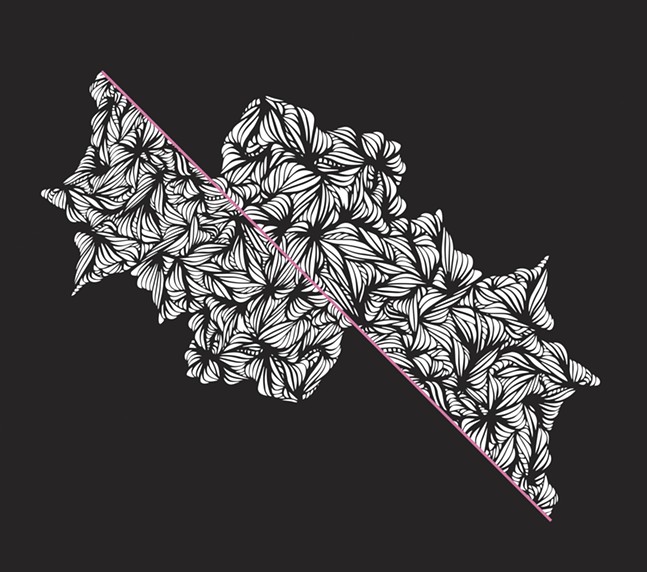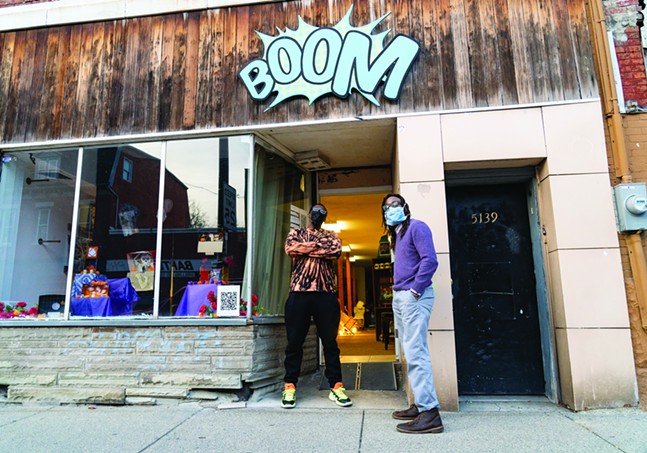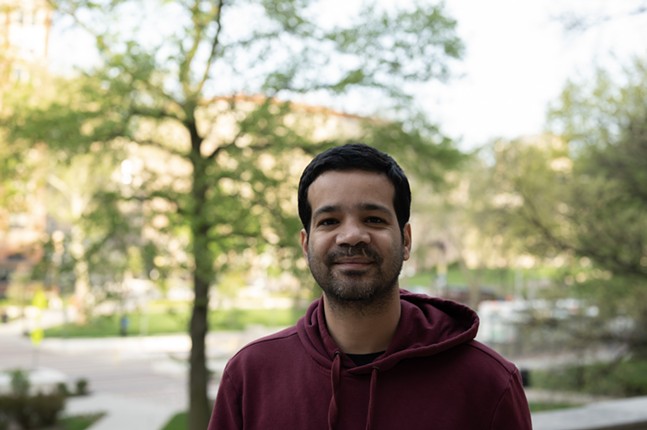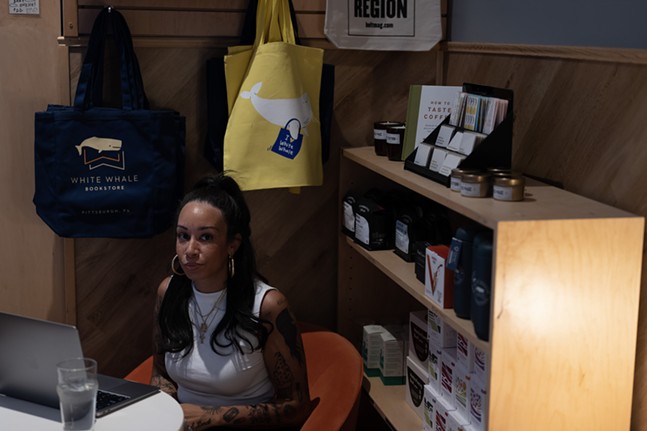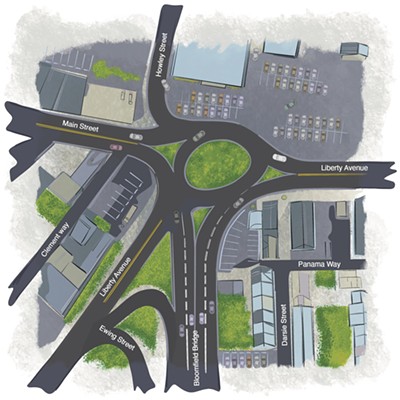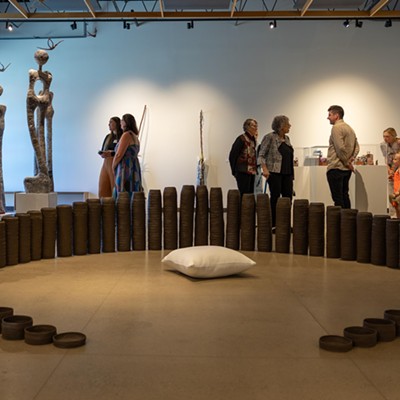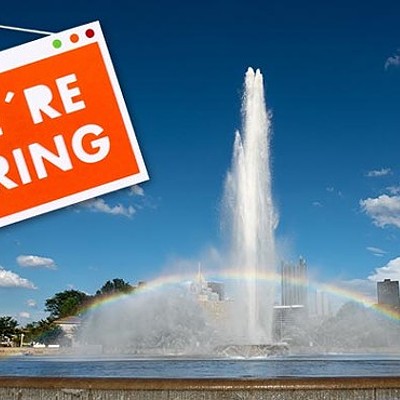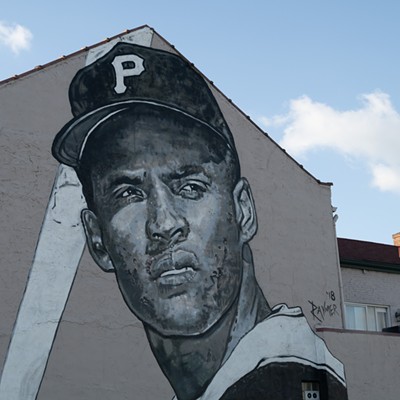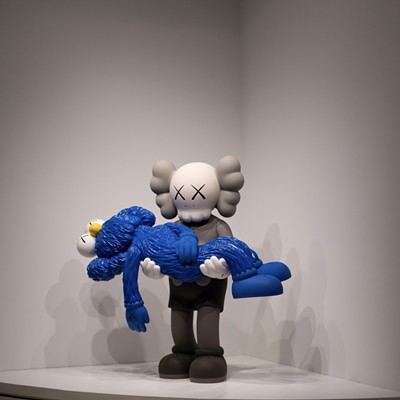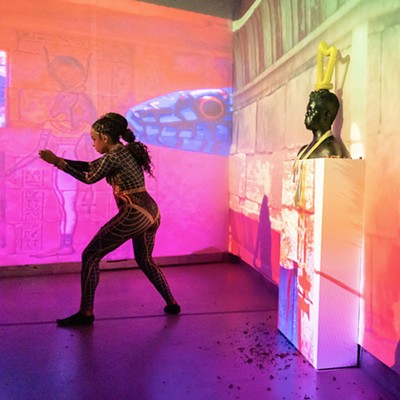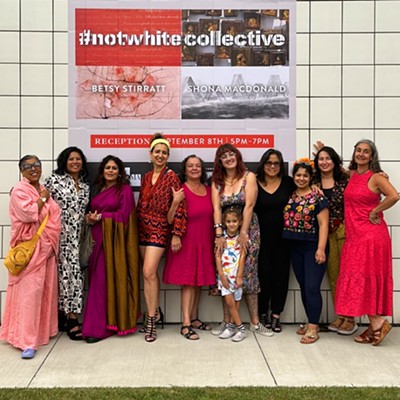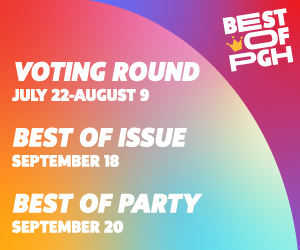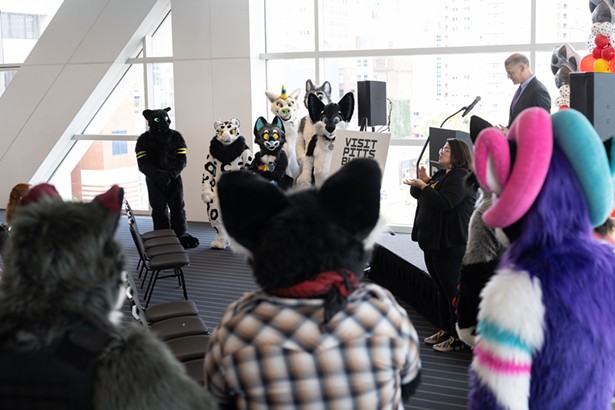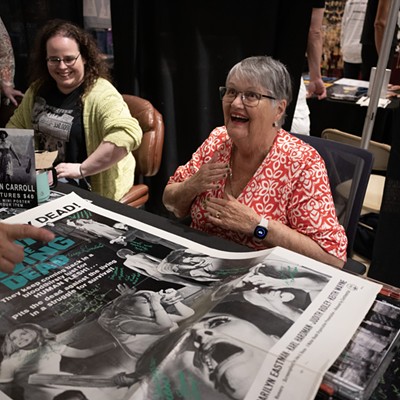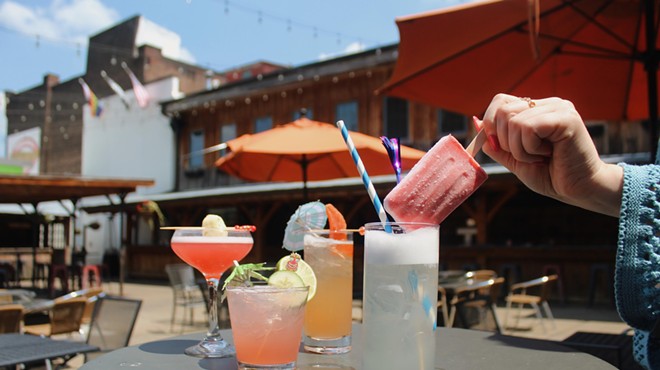On paper, Pittsburgh looks like a vibrant arts city. It also looks like a city with serious racial inequities. Artists of color say it's both.
They likewise say this doesn't need to be the case. The city's institutions adopted sweeping diversity, equity, and inclusion policies following the 2018 killing of Antwon Rose Jr., a scathing 2019 report detailing a deadly gulf in pre- and postnatal health outcomes for Pittsburgh's Black women, and the 2020 murder of George Floyd. Sometimes rounded out with accessibility and social justice policies, these formed the many acronyms now often labeled (as in this article) "DEI." As with critical race theory (CRT) and LGBTQ rights issues, this acronym has recently been co-opted as a racist dog whistle by many on the right, but facilitators and supporters of DEI work say it's still desperately needed.
The problem in Pittsburgh, artists say, is how it's been implemented.
Where the paint meets the canvas
Somes artists argue that what looked like a sea change in 2020 and 2021 now looks more like a shift in language at many organizations. They say their work was frustrated by white leadership, entrenched racism, and institutional inertia. A few have departed — or were fired from — their roles. A few have shifted focus. And a few have left Pittsburgh altogether.
BOOM Concepts co-owner J. Thomas Agnew says Pittsburgh's arts scene reflects the city's broader inequities. In 2020, the COVID-19 pandemic forced hard conversations about which organizations had the resources to survive a prolonged shutdown.
It quickly became clear, Agnew says, that when it came to larger organizations, the focus on inclusion got lost, adding "they were just trying to really get back into the program.”
"There was like a larger arts group that was kind of coming together and trying to figure out how to work through COVID," Agnew tells Pittsburgh City Paper. "And they weren't necessarily saying anything about the Black people who were being killed by police."
"We called that out and really were just talking to them about how they should be figuring out efforts to support more Black, brown, queer, femme artists, and organizations here in Pittsburgh," he says.
Eventually, that pressure resulted in grant opportunities from funders and nonprofits directed at both arts funding and DEI work. One of those projects, the Visual Arts Coalition for Equity (VACE), sought to give its smaller member organizations access to the same level of equity training as larger organizations, such as the city's museums.
Kemuel Benyehudah was a member of the 2021 VACE cohort. He's currently a doctoral candidate at the University of Pennsylvania and researches institutional inequity at arts organizations.
"When I joined VACE, my assumption was that the city wanted to move in a different direction," Benyehudah says. However, a lack of tangible results in the cohort — as well as a brief tenure in a community engagement role at the Mattress Factory, where he says his advocacy for deeper engagement with the North Side's Black community created tension between him and the museum's white leaders — led Benyehudah to leave Pittsburgh altogether. He says his experience adds to what he encounters in his research, namely museums using their work with artists of color as a façade over ongoing systemic issues.
"The art covers up the racism," he says. "It's literally the makeup on the face of the organization."
David Oresick, the Mattress Factory's executive director, says he cannot comment “on individual perceptions or experiences regarding relationships,” but pushed back on the idea that the museum's staff was resistant to implementing far-reaching DEI measures.
"We recognize the challenges involved in developing a workforce that mirrors the rich diversity of the communities we serve," Oresick told CP in an email, "[a]cknowledging that our current staff composition — predominantly white — does not accurately represent our region's demographics." Oresick cites the diversity of artists the museum has collaborated with ("60% BIPOC, 40% Black, and 20% identifying as LGBTQ since 2018") and says 70% of the Mattress Factory's after-school program participants, all of whom were North Siders in 2023-24, identified as Black or African American.
"Any suggestion of resistance within our teams to these [DEI] efforts does not reflect the reality of our collective and ongoing work," he says.
Tara Fay Coleman (who, full disclosure, has previously written for CP) says her experience at the Pittsburgh Cultural Trust in a curatorial role soured after she spoke up about perceived inequities.
"I went in pretty optimistic because it was my first big-girl arts job," she says. The early optimism she felt faded after Coleman says a white artist she was working with spoke disrespectfully to her. Instead of having her back, she alleges the institution went out of its way to appease the artist. Coleman began to feel like she was being "undermined."
"When you allow artists to act this way and treat people this way, it reinforces that that behavior is acceptable, and I shouldn't be subjected to that," Coleman says. She requested a mediated talk with the manager of DEI and human resources to discuss ways to prevent future friction.
According to Coleman, this experience and friction with a white manager eventually culminated in a performance improvement plan (shared with CP) that Coleman refused to sign off on, and Coleman's subsequent dismissal earlier this year.
"Me requesting a conversation about my experience as a Black woman in this organization was completely invalidated," she says.
In a statement, Trust CEO Kendra Whitlock Ingram told CP, "As a biracial Black woman who's served in leadership positions at arts organizations across the country, I can personally underscore the importance of continued progress on DEAI initiatives." Ingram provided CP with a detailed list of the Trust's DEI programming, including the organization's work with Diaz Inclusion Consulting, a cross-departmental DEAI committee, and the employment of a dedicated DEAI manager.
The Trust likewise declined to comment on confidential personnel matters.
Both Benyehudah and Coleman speak of "tokenization," "tone policing," and the potency of white staff's reported fear. "Tears get weaponized," Benyehudah says. He and Coleman also say DEI initiatives and human resources officers, including those with BIPOC identities, are not the backstop they seem to be on paper.
Omid Shekari, an artist and faculty member at the University of Pittsburgh, says the situation looked similar at Pitt and a Cleveland arts nonprofit where he served on the board. He stepped away from a DEI committee at the university after several job openings went to white candidates despite the committee's recommendations. "I think there are some big issues with these committees in general," he says. "The need of having a committee to address diversity, equity, inclusion, justice, accessibility — that first tells us that we don't have any of those things."
"What I found in the past few years," Shekari says, "is that [these] committees usually sit around and talk about finding language rather than actually changing these issues."
Dominique Chestand, who served as the VACE coordinator in 2021 and currently works as the operations manager at Shiftworks (formerly the Office of Public Art), says the city seemed open to new ideas when she started working for the coalition. "I was hired specifically because I said that I'm willing to say the things that most people aren't willing to say," she recalls.
After promising early meetings, Chestand says inertia set in quickly.
"I think in the generative phases of that organization when we were building the language that [would] represent the coalition, everything was hunky dory," she says. She adds that, when it came to “turning that language into action,” she was met with “a lot of tension, a lot of pushback" from some members of the group.
"A lot of the time, that [DEI] language is not practice," Chestand says. "The way that organizations execute their programming, execute their other initiatives, it's just something that doesn't really stick."
Agnew says BOOM Concepts was part of VACE but dropped out when it became clear that BOOM had different needs than the other member organizations. Benyehudah, meanwhile, says he's unsure what ultimately became of VACE's research. "Where's the data?" he wonders.
Like other initiatives from the time, VACE has an attractive website that's still live. However, the program's Resources and Calendar pages are mostly empty, and the Fellowship still reflects the 2021 cohort of which Benyehudah was part.
"It's so easy to just come up with these numbers and put it out, but it's all about the actions," Agnew says. "And can you consistently do that? And can you consistently show up for other people that don't look like you?"
CP reached out to the Associated Artists of Pittsburgh (AAP) and Brew House Arts to inquire whether VACE initiatives still informed their work but did not hear back by press time. Update: Shortly after publication, AAP notified CP that VACE members are still meeting as a group.
"We do still meet as VACE, and we spent 2023 focusing on wage standards for artists and arts workers," AAP's executive director Madeline Gent told CP. The org plans to meet these minimum standards by July of 2024.
Beyond language
N.E. Brown, a sculptor who previously worked at Pitt, says several factors prevent arts leaders from implementing DEI initiatives more fully, but one of the biggest is pay and how it's distributed. Pittsburgh is rich in foundation funding, but it's distributed in a way that she says can exacerbate inequities. She worries giving money to individual artists without community buy-in can lay the groundwork for gentrifying the city's neighborhoods.
"Pittsburgh funding is great in terms of it giv[ing] artists opportunities," she says. "At the same time, I don't see that funding helping communities as a whole."
When it comes to DEI initiatives, Brown says, "I believe in it. It's the last thing we have because affirmative action is gone." But, Brown muses, "The problem with Pittsburgh is that Pittsburgh … has really perfected the craft of racism, especially liberal racism."
Several artists interviewed for this story, including Shekari, said liberal values often cover for a lack of willingness to radically rethink institutional models. "Liberal politics requires pacifism, neutrality, and, in general, maintaining the status quo," he says. "In order to actually get to diversity and create an equitable place, which is inclusive [and] accessible … you need to transform the whole structure."
Everyone interviewed for this article says change needs to extend beyond equity language — otherwise, the resources necessary for change remain concentrated in legacy organizations.
"The problem isn’t actually DEI," Benyehudah says. "Rather, the problem is that DEI initiatives are terribly underfunded, understaffed, and misaligned with the community’s concrete needs … Funders, artists, museum practitioners, and communities need to work more closely together to critically discuss and implement solutions which can most benefit those who the DEI initiative is supposed to be targeting."
Agnew says change needs to happen at the top, especially at foundations and within boards (he currently serves on two). Without pressure in the C-suite, he says initiatives like DEI get lost in short-term grant funding cycles.
"[W]hen you have white-led organizations who are getting the majority of the money, and they're hiring the people, and they're still working within the same cycles as they would any other grant," he says. "When that cycle is over, people are getting fired, or people are getting laid off, or they're not putting that much effort into the work."
Trust CEO Ingram says the organization has focused on recruiting and retaining more diverse leadership. "The Trust has increased the diversity of its leadership team and Board significantly in recent years," Ingram says. "The 14-person leadership team includes six individuals identifying as BIPOC, for example."
Coleman sees a throughline in hiring practices — she says many institutions, despite adopting more inclusive language, still offer too many positions that are part-time, poorly compensated, or require a degree despite being entry-level. "I think that speaks to the optics of uplifting Black artists but not giving them sustainable opportunities," she says.
Brown says one solution is for artists of color to own their work and where it's displayed. "The art institutions and some of the educational institutions are predominantly white because they want to be," she says. "We need to own our spaces."
Agnew says education is key. "Being able to buy your own property, your own land, that is highly important," he says. "But … who's also educated enough to go through that process alone?"
BOOM Concepts is in the early stages of identifying a building to purchase, and Agnew says the process is complicated. He says local funders and policymakers should do more to educate artists and the community more broadly on the ins and outs of buying property. Agnew is leaning on community groups and other artists as BOOM seeks a forever home.
Shekari doubts that large local institutions will change but sees transformative power in building a community. He and other artists are in ongoing discussions about what it would look like to form a collective "vessel" that starts with a nucleus of artists and grows to address shifting community needs.
"One thing about Pittsburgh that is unique is that the art community is small enough that people know each other," he says. "It's small enough to create a dialogue that impacts the whole city."

